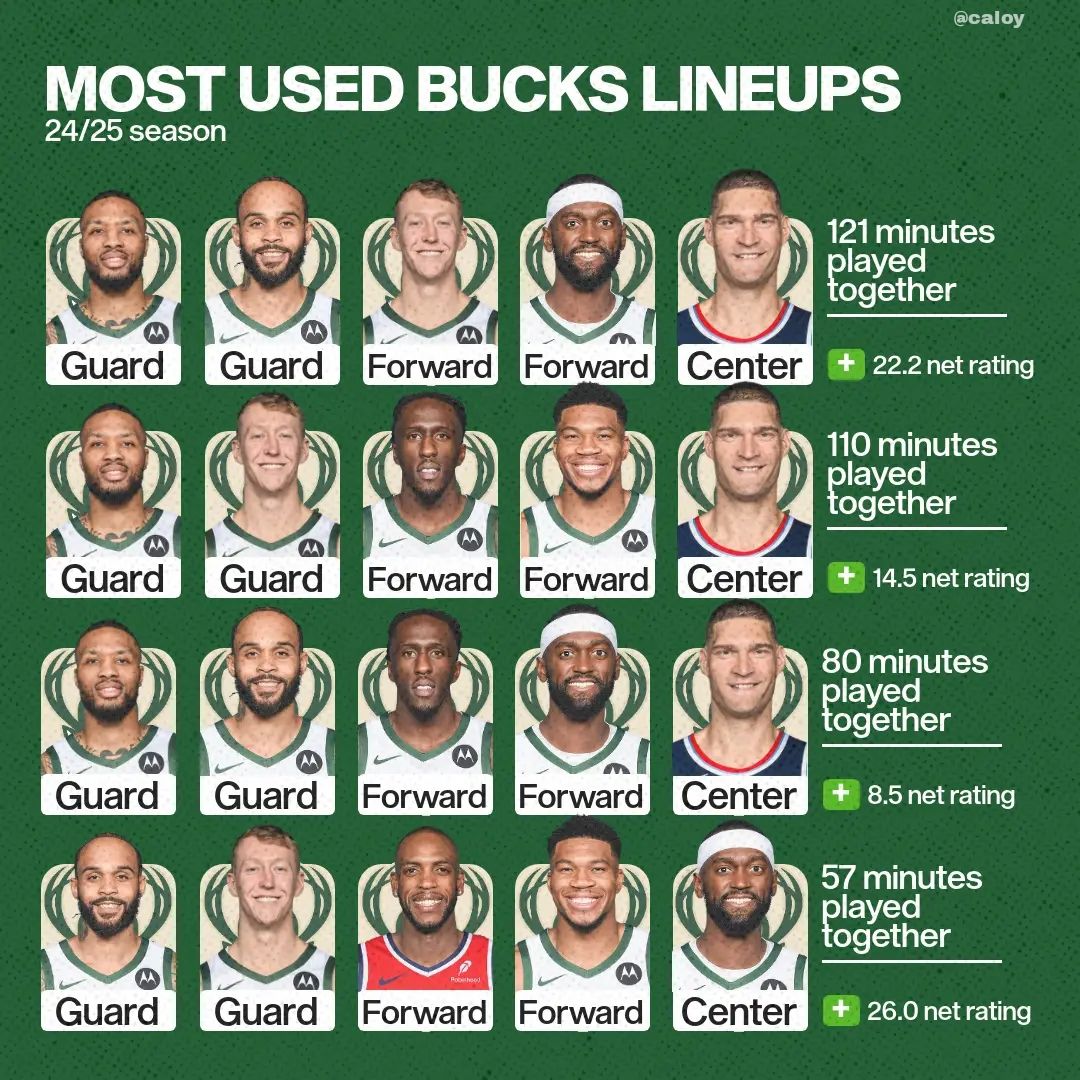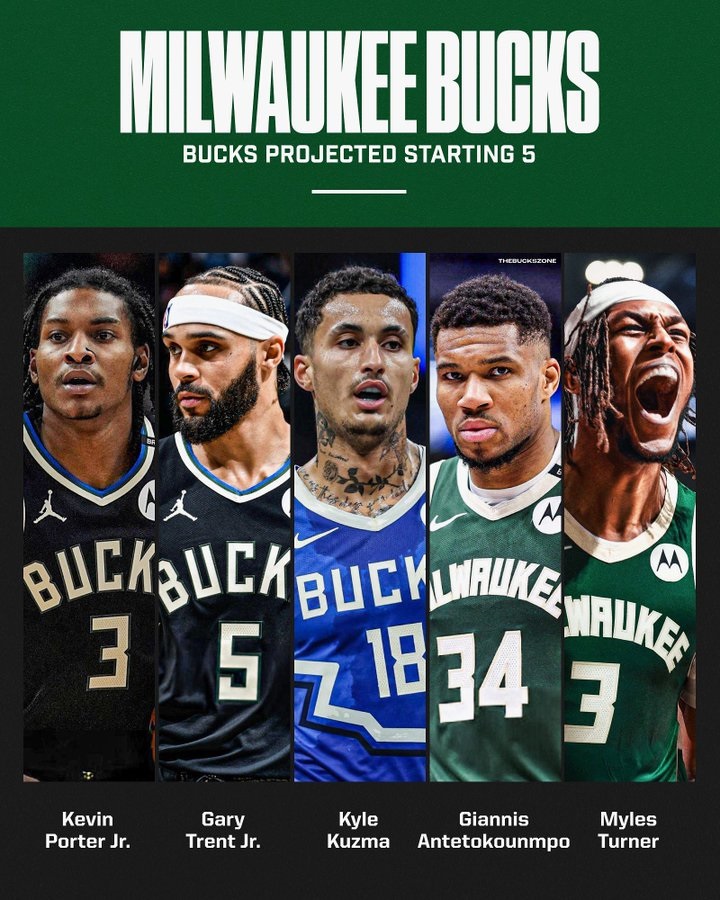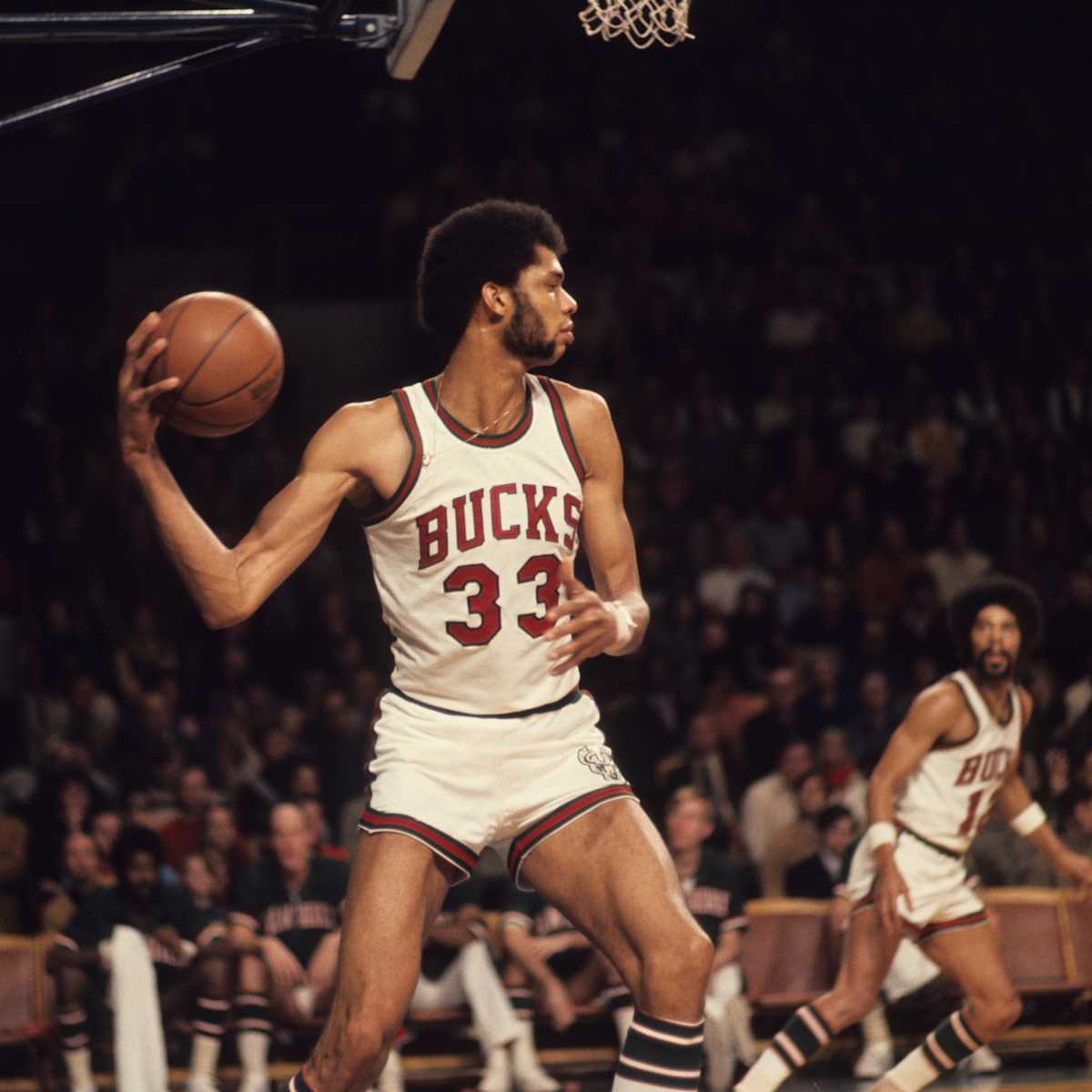Came across the chart and it is extremely interesting food for thought. Last season the most used lineup didn’t include Giannis and guess what? It was also one of the most productive line ups!

The 2024-25 NBA season was a rollercoaster for the Milwaukee Bucks, blending moments of dominance with frustrating inconsistencies. This graphic captures the essence of their on-court strategy by highlighting the team’s most utilised five-man lineups. This image isn’t just a snapshot of player combinations—it’s a window into how the Bucks structured their rotations under head coach Doc Rivers, emphasising spacing, defence, and star power. But beyond the numbers, it raises deeper questions about team dynamics, particularly around superstar Giannis Antetokounmpo. While these lineups posted impressive net ratings during the regular season, the Bucks’ playoff flameout once again spotlighted Giannis’ tendency to prioritise personal milestones over collective success, often to the team’s detriment. Let’s break it down step by step.
Understanding the Graphic: A Visual Breakdown
The infographic, titled “Most Used Bucks Lineups” for the 24/25 season, ranks four key five-man units based on minutes played together. Each lineup is presented with player headshots aligned by position—Guard, Guard, Forward, Forward, Center—alongside their shared court time and net rating (a measure of points scored minus points allowed per 100 possessions). The green backdrop and clean design make it easy to digest, but the real story lies in the personnel and performance metrics.
Here’s a detailed rundown of each lineup, inferred from player appearances, jerseys, and cross-referenced with season stats from reliable sources like NBA.com and Reddit discussions on Bucks rotations:
- Damian Lillard (Guard), Gary Trent Jr. (Guard), Khris Middleton (Forward), Giannis Antetokounmpo (Forward), Brook Lopez (Center)
- Minutes Played: 121
- Net Rating: +22.2
This was the Bucks’ go-to starting unit for much of the season, blending Lillard’s elite scoring and playmaking with Trent’s sharpshooting from the perimeter. Middleton provided veteran savvy and spacing, while Giannis dominated the paint and Lopez anchored the defense with his rim protection and outside shooting. The high net rating reflects excellent offensive efficiency (likely around 120+ points per 100 possessions) and solid defense, thanks to Lopez’s blocks and Giannis’ versatility. This group embodied the Bucks’ “championship or bust” aspirations, excelling in transition and half-court sets.
- Damian Lillard (Guard), Pat Connaughton (Guard), Taurean Prince (Forward), Giannis Antetokounmpo (Forward), Brook Lopez (Center)
- Minutes Played: 110
- Net Rating: +14.5
A slight variation on the starter-heavy lineup, this unit swapped Trent for Connaughton (a reliable 3-and-D wing) and Middleton for Prince (a versatile forward acquired in the offseason for depth). The result was a more defensive-minded group, with Connaughton’s energy and Prince’s length helping on the boards and in switches. While the net rating dipped slightly from the top lineup, it still indicated strong performance, particularly in games where Middleton rested or dealt with injuries. Offensive rating might have hovered around 115, bolstered by Lillard-Giannis pick-and-rolls.
- Damian Lillard (Guard), Gary Trent Jr. (Guard), Taurean Prince (Forward), Khris Middleton (Forward), Brook Lopez (Center)
- Minutes Played: 80
- Net Rating: +8.5
Notably, this is the only lineup in the graphic without Giannis, relying instead on a balanced mix of shooting and defense. Lillard and Trent handled the backcourt, Prince and Middleton provided forward flexibility, and Lopez remained the constant at center. The lower minutes suggest it was used in specific matchups or when Giannis sat, but the net rating—while positive—lagged behind the Giannis-inclusive groups. This could point to better ball movement without Giannis’ ball-dominant style, though the sample size is smaller. Discussions on Reddit highlighted similar bench-heavy units performing well defensively, with ratings around 102 points allowed per 100 possessions.
- Gary Trent Jr. (Guard), Pat Connaughton (Guard), Taurean Prince (Forward), Giannis Antetokounmpo (Forward), Bobby Portis (Center)
- Minutes Played: 57
- Net Rating: +26.0
The least used but most efficient of the bunch, this lineup featured a smaller, faster frontcourt with Portis stepping in for Lopez. Trent and Connaughton offered shooting, Prince added switchability, and Giannis thrived in a more open floor. The sky-high net rating screams “small sample success,” likely driven by explosive offense (perhaps 130+ offensive rating) in blowouts or against weaker benches. Portis’ energy and rebounding complemented Giannis perfectly here, making it a potent closing or comeback unit.
These lineups collectively showcase the Bucks’ strategy: heavy reliance on star talent like Lillard and Giannis, supplemented by role players for shooting and defense. The positive net ratings across the board contributed to a 48-34 regular-season record, good for 5th in the East. However, the varying inclusion of Giannis hints at an underlying issue—while his presence often elevated efficiency, it sometimes came at the cost of team cohesion.
The Regular Season Mirage: Strong Lineups, But Lingering Concerns
On paper, these combinations were a recipe for success. The top lineup’s +22.2 net rating rivals championship-calibre units, driven by Giannis’ all-around dominance (averaging 30.4 points, 11.9 rebounds, and 6.5 assists per game). Pairing him with spacers like Lopez and Trent allowed for drive-and-kick opportunities, while defensive anchors kept opponents in check. Midseason analyses praised rotations like the third-most-used group (similar to our #3 here), which boasted a 101.7 defensive rating without Giannis, suggesting the supporting cast could hold its own.
Yet, cracks appeared. The Bucks cycled through 11 starting lineups early on due to injuries and inconsistencies, with Giannis-centric units dominating minutes but occasionally leading to stagnant offense. Giannis’ high usage rate (often over 35%) meant the ball stuck in his hands, reducing touches for shooters like Middleton and Lillard. This worked in the regular season against lesser competition, but foreshadowed playoff vulnerabilities.
Why Giannis Falls Short When It Really Counts: Stats Over Substance
Here’s where the narrative shifts from celebration to scrutiny. Despite gaudy regular-season numbers and lineup efficiencies, the Bucks crashed out in the first round of the 2025 playoffs, losing in five games. Giannis posted monster averages—33.0 points, 15.4 rebounds, and 6.6 assists—but the team faltered. In his final game, he even notched a historic 30/20/10 performance, joining an elite club, yet it came in a loss that ended their season. This pattern isn’t new; it’s a recurring theme in Giannis’ career, where personal accolades mask deeper issues in high-stakes moments.
Critics argue Giannis prioritizes stats to the team’s detriment, a claim substantiated by infamous incidents like his 2023 stat-padding episode. During a game against the Wizards, Giannis intentionally missed a shot at the rim to grab his own rebound and secure a triple-double, a move slammed as “cheap” and “self-serving” by the New York Post. Such behavior undermines team morale and focus, especially when the Bucks needed every edge in close contests. Videos and analyses highlight how stat-chasing leads to downfall, with Giannis himself acknowledging the pitfalls—yet repeating them.
In playoffs, this manifests as inefficiency when it matters most. Back in 2020, with the Bucks down 3-0 to the Heat, scrutiny fell on Giannis’ inability to lead despite MVP-caliber play, questioning his clutch gene. Fast-forward to 2025: his stellar stats couldn’t prevent another early exit, partly due to poor decision-making in crunch time. Giannis’ free-throw struggles (around 65% career) force him into hero-ball mode, leading to turnovers and stagnant possessions that hurt lineups reliant on his drives. ESPN reports captured his frustration with team effort post-losses, but insiders note his ball dominance fatigues teammates and limits their involvement. The 2021 championship is looking more and more as a notable freaky exception, maybe even a set up by the NBA to give a smaller franchise a title.
Compare this to peers like Nikola Jokic, who elevates teams through unselfish play. Giannis’ approach, while yielding All-NBA honours, has coincided with three straight first-round exits post-2021 title (often blamed on injuries, but patterns persist). A shocking stat: Giannis led the league in points but ranked poorly in clutch-time efficiency, with the Bucks posting a negative net rating in fourth quarters of close games. social media posts and forums echo accusations of “stat padding” over team wins, with one user noting how his triple-double hunts mirror Russell Westbrook’s criticised seasons.
Ultimately, these lineups prove the Bucks have the talent for regular-season success, but Giannis’ stat-focused mindset hampers adaptability in the playoffs. To reclaim contention, he must shift toward team-first basketball—distributing more, trusting rotations, and ditching the padding. Until then, graphics like this will remain bittersweet reminders of untapped potential. Casual fans will suck up the Bucks’ marketing about all the points he scored and records he broke. People that care about the team will wonder why Giannis can’t develop in a meaningful way and how much longer his team mates will have to cover up for his many weaknesses.




